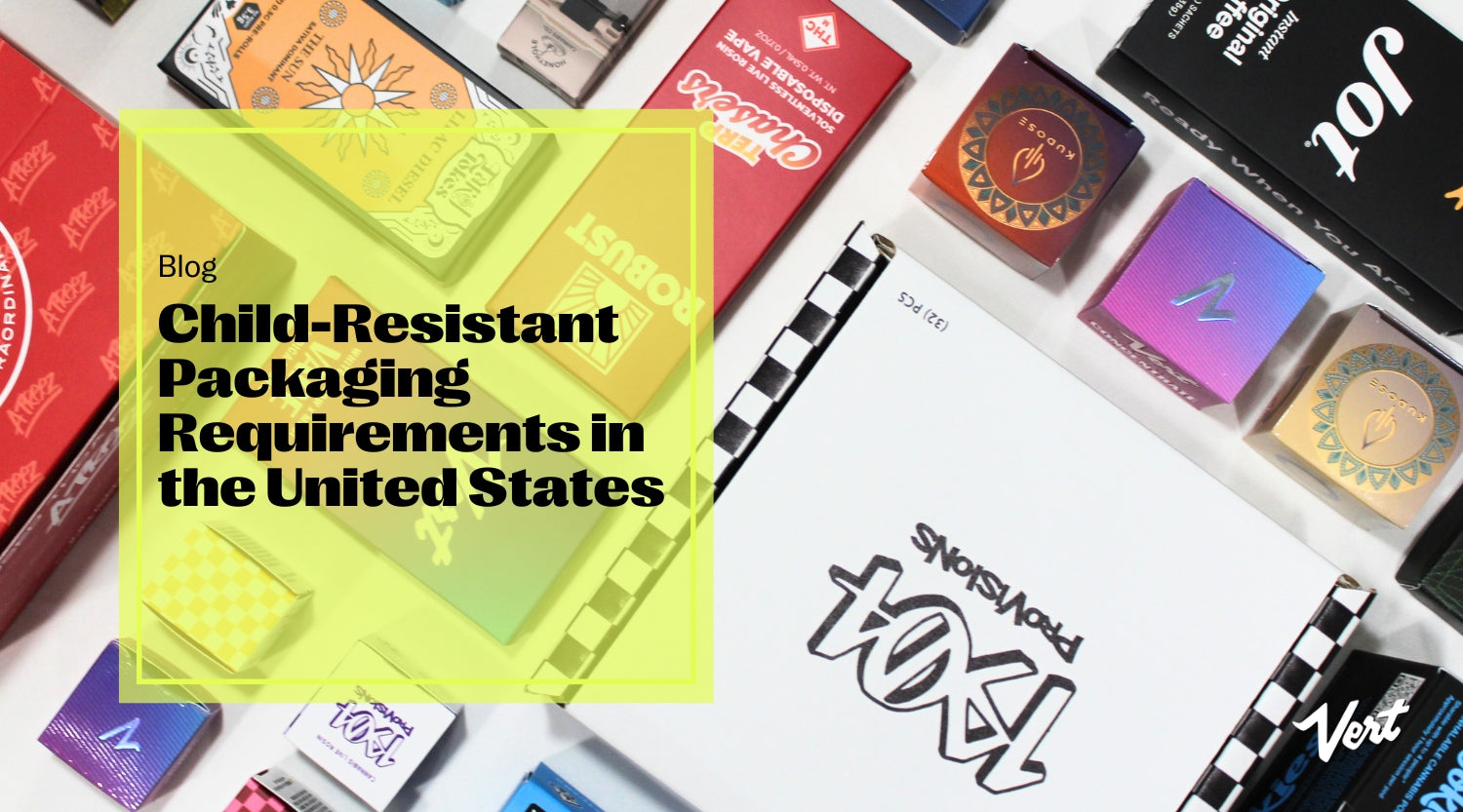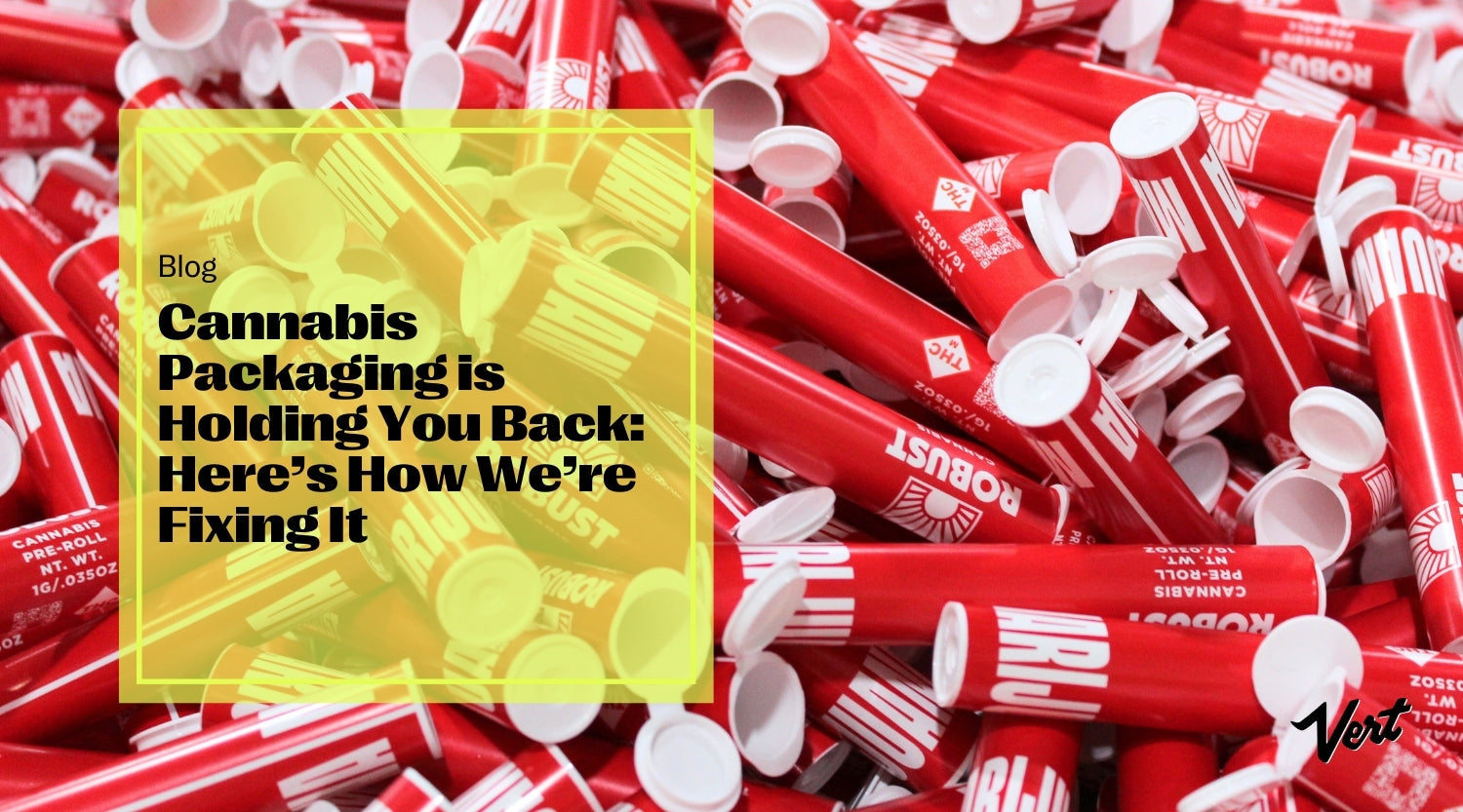Strict regulations govern the child-resistant packaging requirements for certain products, ensuring children are protected from potential hazards. Child-resistant packaging (CRP) plays a crucial role in preventing accidental poisonings and injuries among children while offering full accessibility for “normal” adults.
Companies that produce potentially toxic substances must stay compliant with specific requirements for child-resistant packaging in the United States. Familiarize yourself with current federally- and state-mandated regulations to keep your products secure and safeguard children.
Federally-Mandated Child-Resistant Packaging Requirements
The Poison Prevention Packaging Act (PPPA) establishes federal regulations for child-resistant packaging in the United States. The PPPA requires certain household substances to be packaged in child-resistant containers to prevent accidental ingestion by children.
The PPPA states that CRP packaging must be "significantly difficult for children under 5 years of age to open or obtain a toxic or harmful amount of the substance contained therein within a reasonable time, and that is not difficult for normal adults to use properly."
Bodies and Laws Regulating CRP
Rules surrounding the sale and packaging of potentially hazardous products are set out in various other federal laws apart from the PPPA:
- The Consumer Product Safety Improvement Act (CPSIA)—the amended version of the earlier Consumer Product Safety Act (CPSA)—aims to protect consumers from injuries and deaths caused by hazardous substances and household items including toys and appliances. The Consumer Product Safety Commission (CPSC) oversees the safety of a wide range of consumer products.
-
The Federal Hazardous Substances Act (FHSA) addresses hazardous substances, such as poisons, corrosives, and flammable materials. It requires labeling of hazardous substances with clear warnings and instructions, prohibits the sale of certain hazardous substances, and includes provisions for child-resistant packaging.
The FHSA defines a hazardous substance—one that requires special packaging to protect children—as one that meets both of two criteria, roughly summarized below:
- Is hazardous due to being toxic, corrosive, flammable, heat-generating, or is a strong sensitizer.
- Can cause significant personal injury or illness during handling or use. This includes foreseeable ingestion by children.
- The U.S. Environmental Protection Agency (EPA) details requirements for the use of CRP for household pesticide products or devices.
Requirements to Prove Child-Resistance
The PPPA outlines specific requirements for testing child-resistant packaging. To be considered child-resistant, a package must meet the following criteria:
- Child testing: The package must be tested on a panel of children aged 4 to 10 years old. A minimum of 80% of the children must fail to open the package within 10 minutes.
- Adult testing: The package must also be tested on a panel of adults. 80% or more must be able to open the package within the 10 minute timeframe.
- Repeatability: The tests must be repeatable, meaning that the same results should be obtained when the tests are repeated.
If a package meets these criteria, it is considered to be child-resistant and can be used for products that are subject to the PPPA.
Which Common Household Products Require CRP?
Specific examples of products that typically require child-resistant packaging include, but aren’t limited to:
- Common health products like pain relievers (ibuprofen), medicines (antacids, antihistamines, cough and cold medications), and vitamins and dietary supplements
- Mouthwash
- Cleaning products like detergents, bleach, and disinfectants
- Household pesticides like insect sprays and rat baits
- Automotive fluids like antifreeze or windshield washer fluid
State-Specific Child-Resistant Packaging Requirements
The federal Poison Prevention Packaging Act (PPPA) provides a baseline for child-resistant packaging requirements in the United States. However, different states have implemented additional regulations or exemptions. Businesses must be aware of both federal and state-level requirements to ensure compliance and avoid penalties for non-compliance.
It's important to consult with legal counsel or regulatory experts to determine the specific child-resistant packaging requirements in your state. Additionally, businesses should be aware of any industry-specific regulations or guidelines that may apply to their products. The Consumer Product Safety Commission (CPSC) is an excellent resource for consumer product regulations, laws, and standards.
Common Types of Child-Resistant Packaging
Companies that produce goods that require CRP have a broad range of options to choose from. Choosing the right option for your product will be a question of balancing compliance with practicality.
Child-Resistant Vacuum-Sealed Jars
Child-resistant vacuum-sealed jars are an innovative option as far as packaging that balances child-resistant technology with mechanisms to protect the product inside. These jars are user-friendly for adults and are designed to maintain product freshness and quality.

Push-and-Turn Caps
Push-and-turn caps are considered child-resistant because they require a specific sequence of motions to open. Children often struggle to coordinate the pushing and twisting actions necessary to unlock the cap. Push-and-turn caps are often found on mouthwash and pill bottles.
Snap-Lock Caps
Snap-lock caps use a locking mechanism to prevent accidental opening. To open the cap, a specific sequence of motions must be performed, often involving pushing, twisting, or pressing buttons. The most common products that use snap-lock caps are aerosols like insect spray or antifreeze.
Tear-Strip Caps
Tear-strip caps have a tear strip that must be removed before the cap can be opened. They're commonly used for prescription medications. You may be familiar with this sealing system from bottles of wine.
Blister Packaging or Pouches
Unit dose packaging, commonly used to package pills, must also meet CRP standards. In this case, failure to comply is defined when a child can gain access to the number of units equaling a toxic amount or eight individual units; whichever is less.
Pro tip: You can have child-resistant packaging that meets all of the requirements and is fully customizable to meet your product's branding and marketing needs. Our premium prints and embellishments, for example, can be applied to all of our child-resistant packaging options for a stunning end result.
Balance Safety, Practicality, and Design
Child-resistant packaging plays a crucial role in preventing accidental poisonings and injuries among children in the United States. Staying informed about changes in the law and implementing effective child-resistant packaging solutions means businesses can contribute to the overall safety and well-being of children.
Companies that produce products that must meet federal- or state-mandated compliance regulations regarding child resistance must choose packaging solutions that balance safety and practicality. If your business requires CRP, we have a variety of compliant, fully customizable solutions. Talk to our packaging experts today about the best child-safe and eye-catching packaging options for your product.




Leave a comment
This site is protected by hCaptcha and the hCaptcha Privacy Policy and Terms of Service apply.